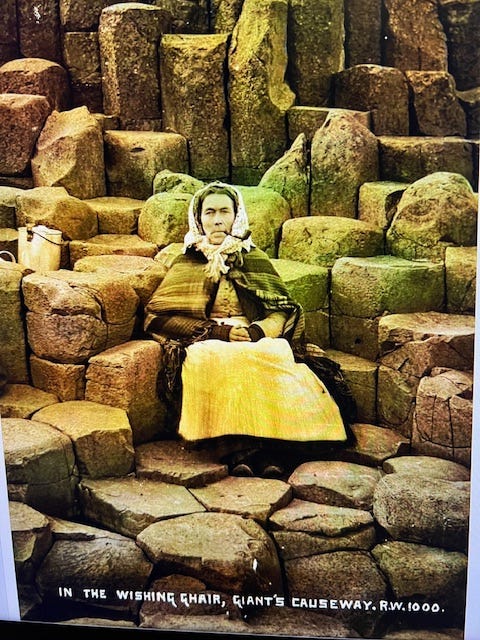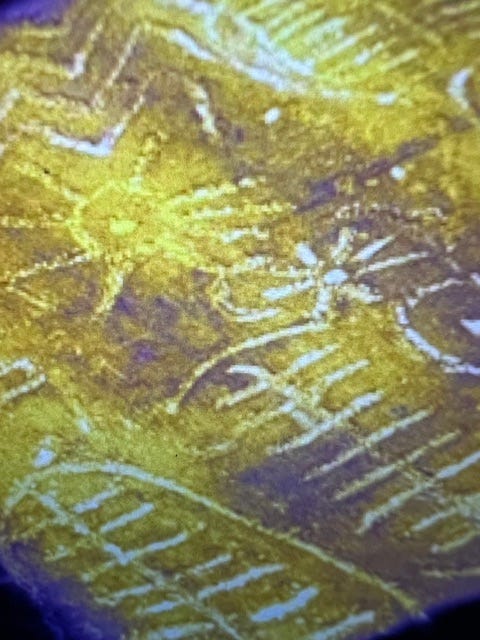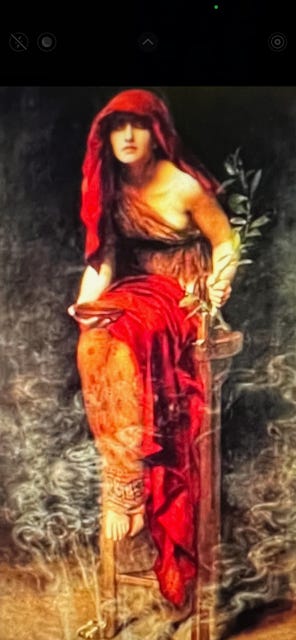IRISH WRITERS, FOLKS AND FAERIES.
CARLETON, YEATS and TRIBES OF FAERY CATS.
William Butler Yeats, whose stories, poetry and weaving of words have entranced millions all over the globe, had his own cache of Inspirers and Muses in Ireland. He read all of Carleton’s works, edited a selection of his short stories: Stories of Carleton with an Introduction by W,B,Yeats (1889). He also proclaimed that:
“Carleton is the greatest novelist of Ireland by right of the most Celtic eyes that ever gazed from under the brow of the storyteller, and with ‘Traits and Stories of the Irish Peasantry’ modern Irish literature began.”
Portrait of William Carleton by John Joseph Slattery
Who was William Carleton?
“I was born on Shrove Tuesday, the 20th of February, 1794, in the townland of Prillisk, in the Parish of Clogher, in the County of Tyrone, being the youngest of fourteen children (eight survived), and no less than five years after my next eldest brother John.”
This was in his autobiography, wherein he wrote plenty, but it was unfinished due to his death of cancer on 30th January 1869. He is buried in Mount Jerome Cemetery in Dublin. D.J. O’Donoghue compiled his unfinished autobiography with correspondence and papers, archiving his life.
William’s father, James Carleton was a tenant farmer and travelling hackler, (one who separates the coarse parts of flax or hemp with a hackle after the retting process of flax, to prepare it for spinning into linen, or to hackle hemp for ropes.) Carleton’s mother was Mary nee Kelly. They lived in a humble rural cottage. Later, the family moved to Springtown, on the South Tyrone, Monaghan border, still in the Clogher Valley but near the Slieve Beagh Mountains and the famed Knockmany (Mallabeny Hill) that he loved to climb, saying that “one can view the length and breadth of Ireland from the Mournes to Lough Erne.” Here he had his inspiration, and his education was firmly grown from The Hedge Schools. Skelgy Headge School was the nearest one to his home in his childhood. He described it as a ‘sod-hut scooped from a bank and roofed with scraws.’ (I looked up the word ‘scraw’ in an Ulster dictionary (one should never be without one) and found out it was a sward of the top-cutting of sod, maybe even green scraws, used to line under a thatch. But obviously the Hedge Schools did not extend to the use of thatch atop the scraws.)
Carleton lived amongst the rural Irish, but the rural Irish in South Tyrone were a certain breed of dignified Irish with a rich heritage of superstitions and stories, evolved from ancient bloodlines that were there long before the Celtic Invasions. Their oral tradition of storytelling in and out of the Hedge Schools claimed Carleton’s mind for his entire life. He determined to write everything down, document everything about the working people of Ulster who did not pay much heed to the ‘big houses’, who worked with nature and the nature spirits of the land, their calendar being the natural rhythm of the year, their ballads, their singing, the poetic language born into both his parents, who spoke native Irish, as did Carlteton. He proclaimed these were his happiest times of his life and wrote a beautiful piece about The Hedge School. No wonder Yeats admired his works so much.
The land itself became the compass of his life. He recorded the lives of the peasantry, whose independence ceased to exist after the dreadful Famine Years. The Famine served a great toll on the Irish.
CLOGHER:
‘Augher, Clogher, Fivemiletown, Sixmilecross, and a seven mile round’ and that is a bit of a ‘fetch’ as it might be seven miles as the crow flies but not as we stomp the roads! But having been ‘born and rared’ in Ireland, I know the mileage system to be solely imaginative! “Aw, sure it’s just round the corner”; “You’ll be there before you know it ”; “You don’t need a vehicle, not even a bicycle, shank’s pony (legs) will get you there quicker!” Ten miles later, one can find oneself completely lost in a faery warp.
Believe me, I have been in such a labyrinth with my husband Robin and cousin Ken in a car trying to get to Dublin from a crossroads in Newry. A policeman stood guard, explaining that we could not go on that chosen road as Princess Diana was visiting Newry. So, we decided to chance another road at the crossroads and ended up going past a house with a curled up giant yellow hose in front of it. Each road from every direction we tried on that crossroads led us past the house with the yellow hose and back to the policeman. I remembered a documentary about Joseph Locke, the famous Tenor, saying he had been caught in a faery warp and he had been told the only way he could get out of it was to turn his jacket inside out to fool the wee people. Robin looked at me oddly when I explained this, but complied, and Cousin Ken, used to the Irish ways, did likewise. We turned our jackets inside out. Sure enough, the next passing of the yellow-hose house on the stretch of road took us to the vital road, sans the copper guarding it, and we found the route to get to Dublin. Robin had a jacket with a very vibrant coloured patterned lining on the inside. He decided he liked it better inside out, and we arrived at the Conrad Hotel in Dublin (his favourite because of a piano in the Presidential Suite there) with Robin getting some interesting looks because of his flashy jacket, huge sewn label intact on the back proving it was inside out. Someone did take him aside to whisper in his ear: “Did you know, Sir, your label is showing?” He answered in another conspiratorial whisper, of course: “Yes, it’s to fool the faeries.”
I will never forget the startled look on the fellow’s face.
Back to Carleton and his homeland. The main town of Clogher is a ‘city’ albeit smaller than any other but having a ‘Cathedral’ (of sorts) makes it a city. The See of Clogher was said to be founded by St. Patrick, and the first bishop was St. MacCartan (or Mac Cairthinn). St. MacCartan’s original church was in AD 506. The present Cathedral was built in 1744. But the name Clogher itself is not just from the Irish: ‘Stony Place’. The old name was hearkened to be ‘Cloch-Oir’… ‘Stone of Gold’, a mysterious ‘Gold Stone’ whether it be really of gold or covered in pyrite (Fool’s Gold) that often appears on granite after many years, it is not known. (Seven of the granite stones in the stone circle in my garden are displaying flashes of pyrite).
A stone that shines gold within a Horned Passage Tomb only on the Equinoxes.
It is known that there was such a stone in a Clogher churchyard, then moved to the porch of the Cathedral to preserve it. It is thought that that very stone of gold could have been the lintel of St. MacCartan’s original church, but we know that the ‘new always borrowed from the old’ and many religious erections were built on ancient Pagan sites, some of the stones kept, to draw folk back to the places of their ‘faith’ and not forsake the old secrets. The Gold Stone was said to represent the old god ‘Cermand Cestach ’ and could well have been used as the lintel for a period of time, though that is uncertain. The curious stone of the ‘Temple of Clochar ‘was documented as having shards of gold and silver in it, the noble metals, and even more intriguing is the fact it was considered to have oracular powers… like the female Priestess Pythius, the Oracle of Apollo at Delphi, who predicted events in riddles, yet when asked by Creon what should he know, she answered but two words and said: “Know Thyself.”
Pythia, the Oracle of Apollo at Delphi.
Yet, the fervent religious Bishops, thought that the god attached to the Gold Stone was invisible and likely to be the Devil himself, making messenger riddles and juggling poetical words to the minds of locals who ‘listened’ to the stone. Regardless of whether they thought it was of demonic sensibilities issuing words of power whispered in the ears of believers, they carefully preserved the stone and kept it zealously within Church grounds. Today, it is of uncertain placement, no longer in sight, and so we do not know where it is, but maybe set loose somewhere else, making mischief.
TRIBE OF FAERY CATS
In the demesne of the Horned Cairns of Knockmany and in the land thereabouts, there are hill forts and raths and Ogham covered stones, Holy Wells that heal eyes and three natural bowls of water that heal warts, full of common pins, for that was the price paid to make the ailments vanish… a price of metal had to be paid to the ‘good people’ to make it happen, and the poor needed their ‘coin’, so pins were used instead. There are thorn trees nearby where one may hang the cleansing rags dipped in the healing waters to bathe the afflictions, and there are mounds, considered otherworld homes of the Sidhe, the ones of Faery who disappeared into the realms, once referred to as the Tuatha De Danann. On one such mound, it has been said, live a tribe of cats, faery cats, no less. They are the invisible women who have guarded their entrances to the Otherworld and their clan homes for centuries, who sometimes it is said, shapeshift into cat forms to prowl the night to keep away marauders. It was thought that after nine such turnings, if they attempted a tenth, then they remained in the cat forms and lived in colonies until natural deaths and rebirths as faery females.
Carleton drew on the superstitions and beliefs of the people surrounding him, mesmerised by it all, and so he became an inspiration for William Butler Yeats. Dean Jonathan Swift created Gulliver’s Travels and Lady Gregory wrote wonderful tales as did Lady Wilde, Oscar Wilde’s mother, Wilde himself, Samuel Becket, Bram Stoker who was born in Dublin (who wrote Dracula and had never been to Translyvania), and countless others also fed their minds and imaginations with the stories and created other tales. So many authors, Irish writers and poets wallowed in the mysteries of the ‘otherworld’, stimulating their souls with storytelling so they could pass on that magical unlimited thinking to us. They all had ‘a way with words’.
I grew up in this territory and know that driving through the ordinary countryside in any and every part of Ireland, there is something that is a ‘calling’ from the past, despite the invasions and the troubles that island has endured. Every village and every town and each landscape is filled with something that hearkens to the soul. It is ancient, and lifts the spirits to both beauty and tears, because of the unexpected magic that is found in normal circumstances. When we read the writings of the famous authors who have captured this ‘invisible thing’, we know they have been ‘touched’ by it and in turn it ‘touches’ us.
“Silken tongues,” my mother would say, “that could tear the heart out of you.”
Dwina. ***
Note: I thank my personal assistant, Eleanor Sherman, who recently gifted me a book by the late Richard Hayward, an author, singer, and actor, who wrote about his travels through Ireland. He reminded me of my County Tyrone. I was inspired to write this because of his book ‘In Praise of Ulster’. He left this mortal coil in 1964.
Footnote: The spelling of Faery is archaic and used throughout. It was ’the habitat of the supernatural’ which later became the ‘creatures’ themselves and the change to Fairy came after the middle ages. The same happened with the word Sidhe (Shee), that was originally the Mound or home, but later used to refer to the Otherworld beings.
MY NEXT POST will be about the Rituals, Lamentations, Tears and Laughter at Irish Wakes, some observations of Carleton in the 1800s and some now.









I just returned from the Isle of Wight so I left my computer and iPad behind and did not write for a week but catching up now! My favourite Tarot was always the Aquarian deck because I loved the colours and the feel of the original deck of cards. My deck is not out until the end of the year. It is a very East West deck with spiritual insight based on three ancient alphabets. Amazon are doing preorders. The Waite deck is also a good one. X
The sun falling upon the Cloch Oir is a wonderful thing - those Horned Cairns seem to have been the places where the dead were ancestralization by the sun's activation at the equinoxes, just as they are enshrined as ancestors at. the midwinter sunrise at Brú na Bóine and at. the midwinter sunset at Maeshowe on Orkney.